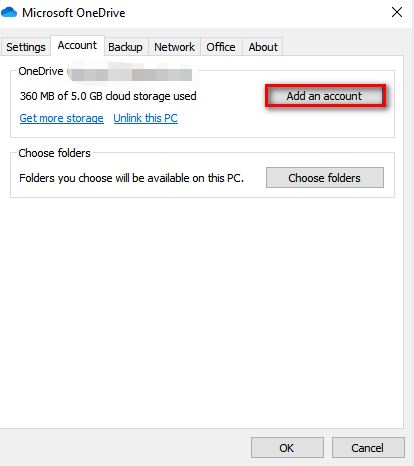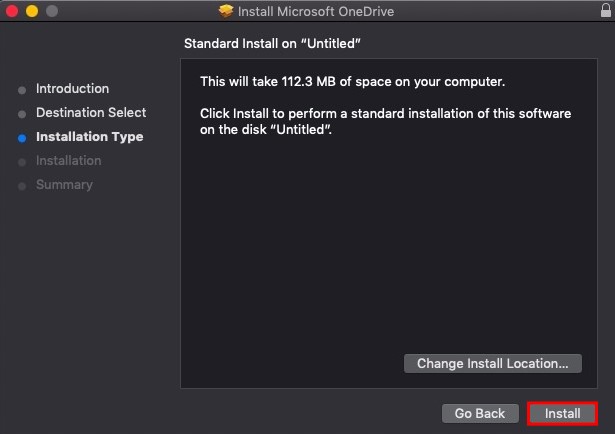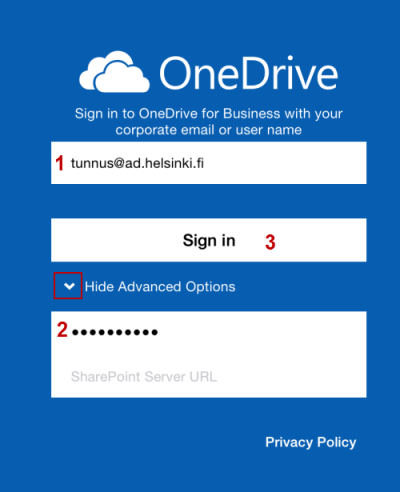

- #ONEDRIVE FOR BUSINESS MAC YOUR ONEDRIVE HAS NOT BEEN SET UP HOW TO#
- #ONEDRIVE FOR BUSINESS MAC YOUR ONEDRIVE HAS NOT BEEN SET UP PASSWORD#
- #ONEDRIVE FOR BUSINESS MAC YOUR ONEDRIVE HAS NOT BEEN SET UP WINDOWS#
The URL still exists for 30 days (and longerįor lithold) Change the password and block sign-onĬhange the password and block the users is your best That data, assuming they were permissioned for it in the first place. What we have seen is that once a user hasĮver been granted a SharePoint / OneDrive licence they can always get back to Well you can just remove the licenses, right? Well actually no.
#ONEDRIVE FOR BUSINESS MAC YOUR ONEDRIVE HAS NOT BEEN SET UP HOW TO#
Same on mobile devices.įor Mobile Devices we always recommend deleting the OutlookĪnd OneDrive App completely and re-installing from the respective App Store How to stop this (working as designed) behaviour?īlock Users is the best way. If they choose view online, it will work perfectly (in their eyes) but they will be taken back to the SOURCE tenant.
#ONEDRIVE FOR BUSINESS MAC YOUR ONEDRIVE HAS NOT BEEN SET UP WINDOWS#
If they double click the icon in the system tray etc or go to Windows Explorer they will open their normal cached local folder data. So on the Monday morning when the users come in, if they don’t immediately unlink their ODfB, and why would they it’s just sitting in the system tray looking normal so the users don’t believe there is anything to do, they will just continue to use the legacy OneDrive data.

(Just like the URL endpoint gets updated at some point)įigure 1 UPN Change flows through Business as usual right? If you change a UPN look carefully you will see that the username settings have been updated in the App.

So before the users’ even get to the point where they will unlink and relink their OneDrive for Business Desktop App, ODfB will actually recognise that the source UPN has changed. When you change a UPN in Office 365, OneDrive for Business client is aware of this and automatically updates itself to reflect this change and continues to work seamlessly for the user. If you are taking over the SMTP Domain name(s) and keeping those same UPNs in the target, then you will also be removing those values from users in the source and updating them with another UPN suffix, probably the MOERA value – At least for a small time whilst you are in post-migration hyper-care period. Then they will disappear from the Workstation Typical cutover event: SMPT Domain Name: remove and re-add OneDrive client updates UPN changes Wrong files, or dragging the whole lot to their new OneDrive “just in case”Īfter unlinking, if they had been set as “Clear space” This could lead to the users’ working in the Two copies of the same data when they link up OneDrive again.

(locally available) will remain on the Workstation after unlinking. Remnant filesĪny files that were set as “Always keep on this device” Users may be connected as part of ongoing collaboration. Notes on unlinking OneDrive for BusinessĪLL business accounts are unlinked including any other organisations A potential automation option is listed at the bottom of this document. We’re currently investigating writing a tool for this purpose. How smooth that is, depends on good upfront communications, the end-user IT maturity, when and how you decommission the users’ access to the source tenant data, and what their identity is set to in the target.Īs yet, we have not come across a publicly available tool that a user can run that will fix / migrate their OneDrive for Business profile yet. In short, the user must unlink their OneDrive for Business client and relink it – but there will be remnants… T2T Migrations – Relinking OneDrive for Business


 0 kommentar(er)
0 kommentar(er)
